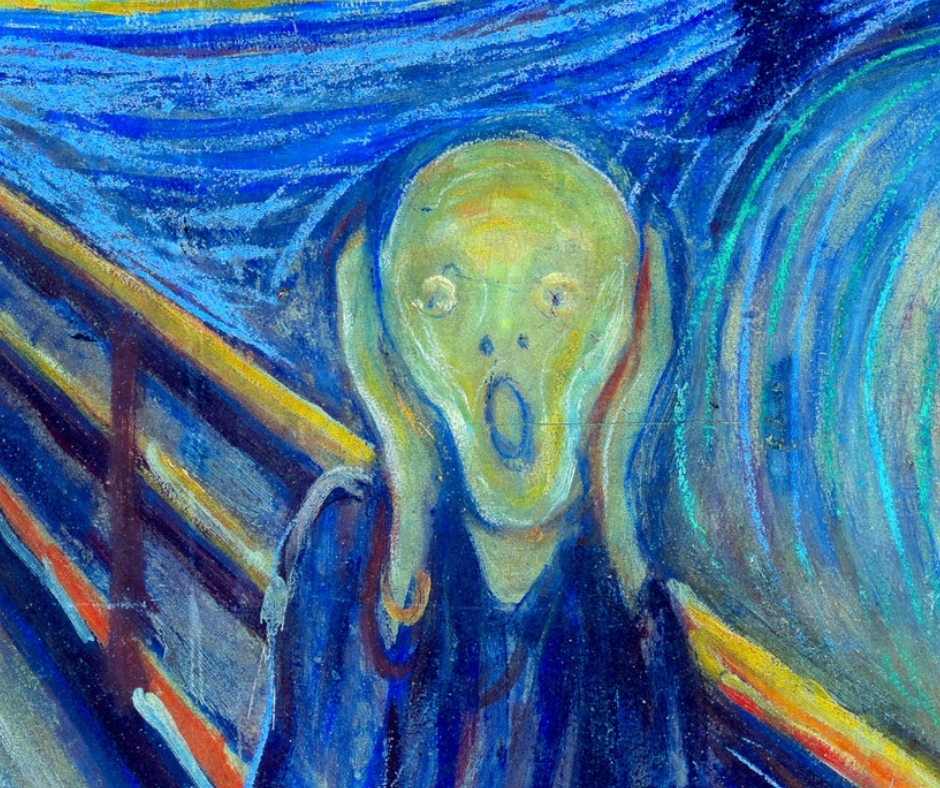angst: \ ˈäŋ(k)st , ˈaŋ(k)st \
: a feeling of anxiety, apprehension, or insecurity

The last eighteen months mark a period unlike any that most people living today have ever experienced. While the United States has been one of the countries hardest hit, the impacts of the COVID-19 pandemic have been worldwide.
With an estimated population of 332,762,582,3 12.6% of the U.S. population have been infected and 0.2% have died.4
That’s one in eight people in this country that are documented as having been infected. One in four hundred and ninety-three have died.
A much larger percentage of the population suffered from other pandemic-related effects. In the spring of 2020, 43 states ordered residents to stay home and required the closure of nonessential businesses, precipitating an economic crisis. In April 2020, unemployment rose to 14.7%. Millions lost jobs, struggled to pay rents, mortgages, and other bills, and had to rely on food banks—in 2020 one in seven individuals were food insecure. Over 2 million households fell at least three months behind on their mortgages. Many Americans continue to suffer from mental health challenges that are “a result of financial hardships, illness and death, social isolation, and a remote/virtual work and school environment.” In February, it was estimated that over 20% of adults were experiencing some kind of pandemic-related psychological distress.5
Complicating matters further, in the U.S., the public health crisis got caught up in the divisive politics that has overwhelmed the country in recent years.
The exact impact politics has had and continues to have is difficult to assess because pandemic tracking data—what there is of it— is subject to delays and uncertainties. Mask-wearing opposition is sometimes political, but determining the extent of mask use and how that affects the spread of COVID is hard. Vaccination rates at the county level can be correlated to the current pandemic status, including hospitalizations and deaths, all of which can also be correlated with the 2020 county-level election results. This epidemic has been turned into a pandemic of the unvaccinated and vaccine opposition is highest on the political right.6
Even though we mostly stay home, are vaccinated, and wear our masks when we do go out, all of this is exhausting. We pay attention to what’s going on and are generally COVID knowledgeable. It’s disheartening to see the trends, disheartening to hear the excuses, disheartening to hear vaccine-hesitant and anti-vaxxers changing their tune after getting deathly sick or after a loved one has died.
It’s disheartening to see political positions on vaccination and masking affect public health.
…disheartening.
…angst.
- Morehead, Allison. “Why ‘the Scream’ Has Gone Viral Again.” The Conversation, May 25, 2021. https://theconversation.com…the-scream…viral-again.
- Spinney, Laura. Pale Rider: The Spanish Flu of 1918 and How It Changed the World. New York: PublicAffairs, 2018.
The nineteenth century saw two flu pandemics. The first, which erupted in 1830, is said to have ranked in severity – though not in scale – with the Spanish flu. The second, the so-called ‘Russian’ flu that began in 1889, was thought to have originated in Bokhara in Uzbekistan. It was the first to be measured, at least to some extent, since by then scientists had discovered what a powerful weapon statistics could be in the fight against disease. Thanks to the efforts of those early epidemiologists, we know that the Russian flu claimed somewhere in the region of a million lives, and that it washed over the world in three waves. A mild first wave heralded a severe second one, and the third was even milder than the first. Many cases developed into pneumonia, which was often the cause of death, and this flu didn’t only claim the elderly and the very young – as in a normal flu season – but people in their thirties and forties too. Doctors were unsettled by their observation that many patients who survived the initial attack went on to develop nervous complications, including depression. The Norwegian artist Edvard Munch may have been one of them, and some have suggested that his famous painting, The Scream, sprang from his flu-darkened thoughts. ‘One evening I was walking along a path, the city was on one side and the fjord below,’ he wrote later. ‘I felt tired and ill. I stopped and looked out over the fjord – the sun was setting, and the clouds turning blood red. I sensed a scream passing through nature; it seemed to me that I heard the scream.’ By the time Munch wrote those words, the pandemic was over, and so was the millennia-long struggle between man and flu. In the next century, the twentieth, science would conquer the crowd diseases once and for all. - “U.S. and World Population Clock.” United States Census Bureau. Accessed September 19, 2021 23:52 UTC. https://www.census.gov/popclock/.
- “ COVID-19 Dashboard by the Center for Systems Science and Engineering (CSSE) at Johns Hopkins University (JHU).” ArcGIS dashboards. Accessed September 19, 2021. https://www.arcgis.com….
As of 10:21 UTC, 42,085,958 had been infected in the United States and 673,763 had died - Dhongde , Shatakshee, and Brian Glassman. “Multidimensional Hardship in the U.S. during the COVID-19 Pandemic.” Social, Economic, and Housing Statistics Division. United States Census Bureau, August 17, 2021. Accessed September 19, 2021. https://www.census.gov….
- Bump, Philip. “Analysis | Republicans Are Still a Bigger Obstacle to Vaccination than Black Americans.” The Washington Post, September 15, 2021. Accessed September 20, 2021. https://www.washingtonpost.com….

